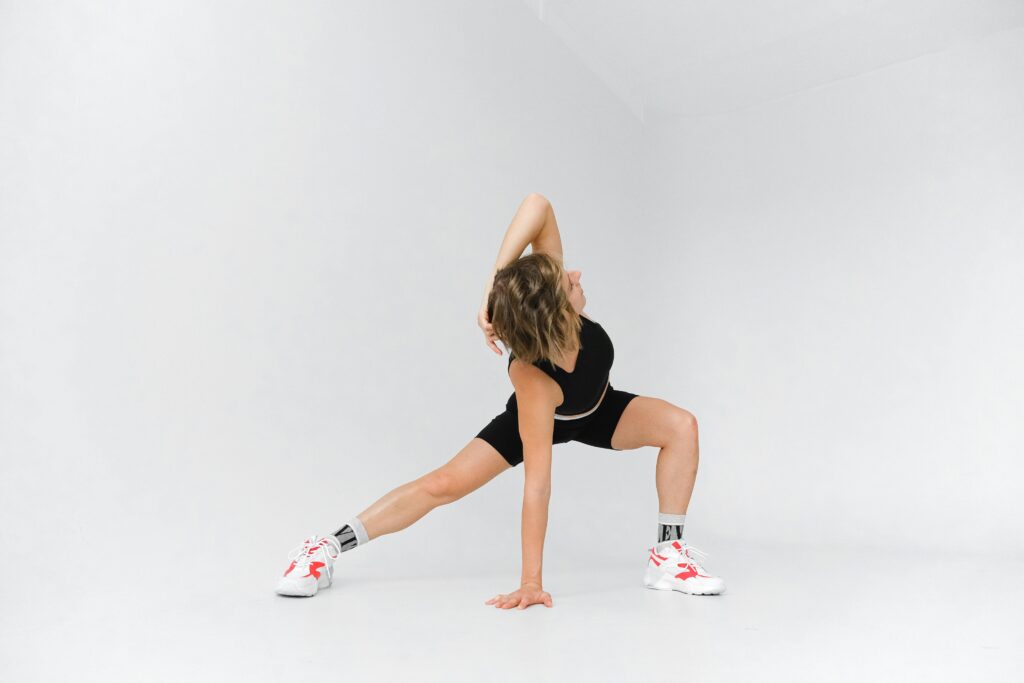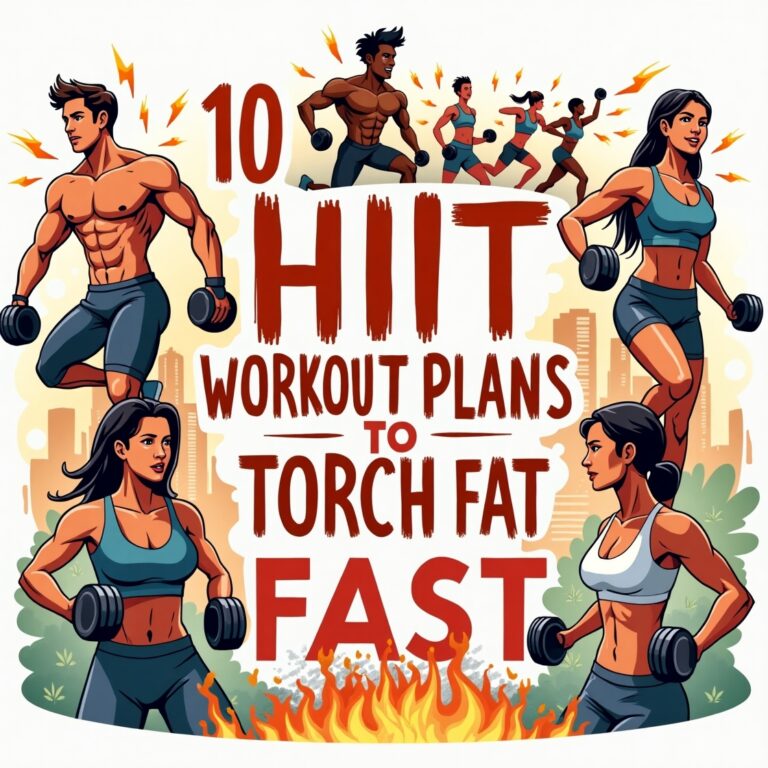Strength Training Workout Plan: Gain Strength and Volume

Strength training is a top way to build muscle and boost fitness. It’s great for both newbies and seasoned gym-goers. This guide will show you how to make a workout plan that increases strength and muscle size. You’ll learn the basics and how to tailor a program just for you.
What is Strength Training?
Strength training, or resistance training, makes muscles stronger and more durable. It uses weights, bands, machines, or body weight to work out. The main goal is to grow muscles and get stronger.
Benefits of Strength Training
- Increased Muscle Mass: It helps muscles grow, making them bigger and stronger.
- Improved Strength: It makes you better at everyday tasks and sports.
- Enhanced Metabolism: Muscles burn more calories than fat, helping you stay slim.
- Bone Health: It makes bones denser, lowering osteoporosis risk.
- Mental Health: It releases happy hormones, improving mood and reducing stress.
Understanding Strength and Volume
Before we dive into the workout plan, let’s get the difference between strength and volume:
- Strength: It’s how much weight you can lift in an exercise.
- Volume: It’s the total work done in a workout, like sets x reps x weight. It’s key for muscle growth.
To grow strong and big, mix heavy lifting for strength with lighter weights and more reps for volume.
Step 1: Set Your Goals
First, decide what you want to achieve. Do you want to build muscle, get stronger, or both? Your goals will shape your workout plan, including exercises, sets, reps, and rest times.
Common Strength Training Goals
- Muscle Hypertrophy: Use moderate weights, high reps (8-12), and short rests (30-60 seconds).
- Maximal Strength: Go for heavy weights, low reps (1-5), and long rests (2-5 minutes).
- Endurance: Use light weights, high reps (15+), and short rests (30 seconds or less).
We’ll focus on a plan that boosts both strength and volume. It’s perfect for growing muscle and getting stronger.
Step 2: Choose Your Exercises
A good strength training program covers all major muscle groups. Here are key exercises for each:
Upper Body
- Chest: Bench Press, Incline Dumbbell Press, Push-Ups
- Back: Deadlifts, Pull-Ups, Bent-Over Rows
- Shoulders: Overhead Press, Lateral Raises, Front Raises
- Arms: Bicep Curls, Tricep Dips, Hammer Curls
Lower Body
- Quads: Squats, Lunges, Leg Press
- Hamstrings: Deadlifts, Leg Curls, Romanian Deadlifts
- Glutes: Hip Thrusts, Glute Bridges, Step-Ups
- Calves: Calf Raises, Jump Rope, Box Jumps
Core
- Abs: Planks, Russian Twists, Hanging Leg Raises
- Obliques: Side Planks, Bicycle Crunches, Woodchoppers
Compound vs. Isolation Exercises
- Compound Exercises: These work many muscles and joints at once (e.g., Squats, Deadlifts, Bench Press). They’re key for building overall strength.
- Isolation Exercises: These focus on one muscle group (e.g., Bicep Curls, Leg Extensions). They help with specific muscle imbalances or growth.

Step 3: Design Your Workout Plan
After picking your exercises, it’s time to plan your workouts. A good strength training program splits your training across the week. This helps you focus on different muscle groups.
Popular Workout Splits
- Full-Body Workout: Works all major muscle groups in one session. Great for beginners or those short on time.
- Upper/Lower Split: Alternates between upper and lower body workouts. This lets you focus more on each group.
- Push/Pull/Legs Split: Divides workouts into pushing, pulling, and leg exercises. Ideal for those with more experience.
- Body Part Split: Focuses on one or two muscle groups per session (e.g., Chest & Triceps, Back & Biceps). Best for advanced lifters.
We’ll use a 4-Day Upper/Lower Split for this guide. It balances volume and recovery well.
Sample 4-Day Upper/Lower Split
Day 1: Upper Body (Strength Focus)
- Bench Press: 4 sets x 5 reps
- Bent-Over Rows: 4 sets x 5 reps
- Overhead Press: 3 sets x 6 reps
- Pull-Ups: 3 sets x 8 reps
- Bicep Curls: 3 sets x 10 reps
- Tricep Dips: 3 sets x 10 reps
Day 2: Lower Body (Strength Focus)
- Squats: 4 sets x 5 reps
- Deadlifts: 4 sets x 5 reps
- Leg Press: 3 sets x 8 reps
- Romanian Deadlifts: 3 sets x 8 reps
- Calf Raises: 4 sets x 12 reps
Day 3: Rest or Active Recovery
Day 4: Upper Body (Volume Focus)
- Incline Dumbbell Press: 4 sets x 8 reps
- Lat Pulldowns: 4 sets x 10 reps
- Lateral Raises: 3 sets x 12 reps
- Face Pulls: 3 sets x 12 reps
- Hammer Curls: 3 sets x 12 reps
- Skull Crushers: 3 sets x 12 reps
Day 5: Lower Body (Volume Focus)
- Lunges: 4 sets x 10 reps (each leg)
- Hip Thrusts: 4 sets x 10 reps
- Leg Curls: 3 sets x 12 reps
- Step-Ups: 3 sets x 12 reps (each leg)
- Box Jumps: 3 sets x 15 reps
Day 6: Rest or Active Recovery
Day 7: Rest
Progression and Overload
To keep making gains, you must overload your muscles. This means slowly increasing the weight, reps, or sets. Here’s how to do it:
- Increase Weight: Add 5-10% more weight once you can do all sets and reps with proper form.
- Increase Reps: Add 1-2 reps to each set before increasing the weight.
- Increase Sets: Add an extra set to your exercises.
Step 4: Nutrition for Strength and Volume
Your workout plan is just half the battle. Proper nutrition is key for building muscle and gaining strength. Here’s what you need to know:
Macronutrients
- Protein: Essential for muscle repair and growth. Aim for 1.6-2.2 grams of protein per kilogram of body weight daily. Good sources include chicken, fish, eggs, tofu, and legumes.
- Carbohydrates: Provide energy for your workouts. Focus on complex carbs like whole grains, fruits, and vegetables.
- Fats: Support hormone production and overall health. Include healthy fats from sources like avocados, nuts, seeds, and olive oil.
Meal Timing
- Pre-Workout: Eat a balanced meal 2-3 hours before your workout, including carbs and protein.
- Post-Workout: Consume a protein-rich meal within 1-2 hours after training to support muscle recovery.
Supplements
While not necessary, supplements can help fill nutritional gaps:
- Whey Protein: Convenient source of protein for post-workout recovery.
- Creatine: Improves strength and power output.
- BCAAs: May reduce muscle soreness and support recovery.

Step 5: Recovery and Rest
Recovery is as important as training. Without enough rest, your muscles won’t repair and grow. Here’s how to optimize recovery:
- Sleep: Aim for 7-9 hours of quality sleep per night.
- Active Recovery: Engage in low-intensity activities like walking, yoga, or stretching on rest days.
- Hydration: Drink plenty of water throughout the day to support muscle function and recovery.
- Foam Rolling: Use a foam roller to release muscle tension and improve flexibility.
Step 6: Track Your Progress
Tracking your progress is key to staying motivated. It helps ensure you’re on the right path. Here’s how to do it:
- Workout Log: Keep a journal or use an app to record your exercises, weights, sets, and reps.
- Progress Photos: Take photos every 4-6 weeks to see changes in muscle size and definition.
- Strength Gains: Watch how much weight you can lift over time.
- Body Measurements: Track changes in your waist, arms, chest, and legs to see muscle growth.
Common Mistakes to Avoid
- Skipping Warm-Ups: Always warm up before lifting to prevent injuries and improve performance.
- Poor Form: Focus on proper technique to avoid injuries and get the best results.
- Overtraining: Give your muscles time to recover by following a structured program and taking rest days.
- Neglecting Nutrition: Fuel your body with the right nutrients to support muscle growth and recovery.
A well-designed strength training workout plan is essential for gaining strength and muscle. By following the steps in this guide, you can create a program that meets your goals. Whether you want to build muscle, increase strength, or both, it’s possible.
Remember to focus on proper nutrition, recovery, and progressive overload to get the best results. Stay consistent, track your progress, and celebrate your gains. With dedication and hard work, you’ll achieve the strong, muscular physique you’ve always wanted.







